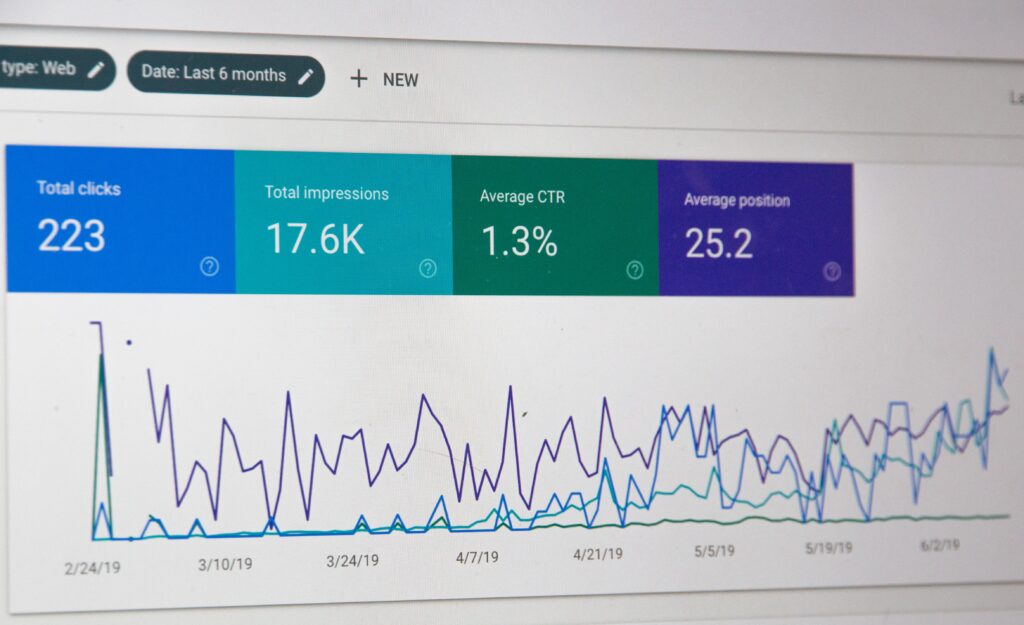In the realm of digital marketing, conversion rate optimization (CRO) has emerged as a critical strategy for businesses aiming to maximize growth. CRO involves systematically improving the percentage of website visitors who take a desired action, such as making a purchase or filling out a lead form. By fine-tuning the user experience, businesses can convert more visitors into customers and drive remarkable growth. In this article, we will explore key tactics for effective conversion rate optimization and how businesses can leverage CRO to achieve substantial growth.
Understanding Conversion Rate Optimization:

Conversion rate optimization is a data-driven approach that focuses on enhancing the user experience to boost the number of conversions on a website. By employing CRO strategies, businesses aim to identify and remove friction points, clarify calls-to-action, and optimize website elements to encourage visitors to take the desired action.
Key Tactics for Maximizing Growth through CRO:

Conduct In-Depth Analysis: Start by analyzing user behavior on your website using tools like Google Analytics. Understand how users navigate your site, identify high-traffic pages, and pinpoint areas with low conversion rates. This analysis provides valuable insights for targeted optimization.
Implement A/B Testing: A/B testing, also known as split testing, is a crucial tactic in CRO. Create variations of key website elements, such as headlines, images, buttons, or forms, and test them against each other. Measure the performance of each variation to determine which one drives the highest conversions.
Optimize Website Load Speed: Page load speed significantly impacts user experience and conversions. Optimize images, reduce server response time, and use caching mechanisms to ensure your website loads quickly, reducing bounce rates and improving conversion rates.
Create Clear and Compelling Calls-to-Action (CTAs): Make your CTAs stand out by using contrasting colors, concise and action-oriented copy, and strategic placement. CTAs that clearly communicate the benefit and urgency of taking action tend to generate higher click-through rates.
Streamline the Checkout Process: If you are an e-commerce business, streamline the checkout process to reduce cart abandonment. Offer guest checkout options, minimize form fields, and provide multiple payment methods to enhance the user experience.
Utilize Social Proof: Display customer testimonials, reviews, and case studies to build trust and credibility. Social proof serves as powerful validation for your products or services, encouraging visitors to convert.
Personalize User Experience: Leverage user data to deliver personalized experiences. Use dynamic content, product recommendations, and personalized offers based on user behavior and preferences to increase engagement and conversions.
Leverage Exit-Intent Popups: Exit-intent popups appear when a user is about to leave your website. Use these popups to present special offers, discounts, or lead magnets to entice visitors to reconsider and convert.
Optimize Mobile Experience: With an increasing number of users accessing websites on mobile devices, it’s essential to optimize the mobile experience. Ensure your website is mobile-responsive and provides a seamless user experience across all devices.
Continuous Iteration and Improvement: Conversion rate optimization is an ongoing process. Continuously analyze data, monitor changes in user behavior, and iterate on your CRO strategies. Regularly test new ideas and keep refining your website to keep improving your conversion rates.
Conclusion:
Conversion rate optimization is a powerful growth strategy that empowers businesses to maximize their online performance. By focusing on improving user experience, conducting in-depth analysis, implementing A/B testing, streamlining the checkout process, and leveraging social proof, businesses can boost their conversion rates and achieve remarkable growth. Remember that a successful CRO requires a data-driven approach and a commitment to continuous improvement. Embrace the key tactics outlined in this article, and your business will be well-positioned to drive conversions, enhance user satisfaction, and unlock exceptional growth in the digital landscape.
FAQs
What is the primary goal of conversion rate optimization (CRO)?
Answer: The primary goal of CRO is to improve the percentage of website visitors who take the desired action, such as making a purchase, filling out a form, or subscribing to a newsletter. By enhancing the user experience and optimizing website elements, businesses aim to drive higher conversions and maximize growth.
How does A/B testing contribute to conversion rate optimization?
Answer: A/B testing involves creating variations of key website elements and comparing their performance against each other. By analyzing the data and identifying which variation drives higher conversions, businesses can make data-driven decisions to optimize their website for improved results.
Why is website load speed crucial for CRO?
Answer: Website load speed directly impacts user experience. A slow-loading website can lead to higher bounce rates and lower conversion rates. Optimizing website load speed by reducing image sizes, improving server response times, and implementing caching mechanisms helps create a more positive user experience and increase conversions.
How can businesses effectively use social proof in their CRO strategies?
Answer: Social proof, such as customer testimonials, reviews, and case studies, helps build trust and credibility. By displaying social proof on product pages or checkout pages, businesses can influence potential customers’ decisions and encourage them to convert.
Is CRO a one-time effort, or does it require continuous attention?
Answer: CRO is an ongoing process. Customer behavior, market trends, and website performance can change over time. Continuous analysis of user data, regular A/B testing, and iterative improvements are essential to keep optimizing the user experience and driving higher conversion rates.

